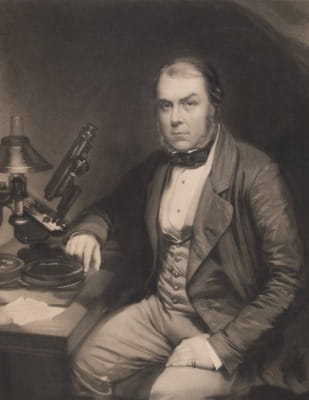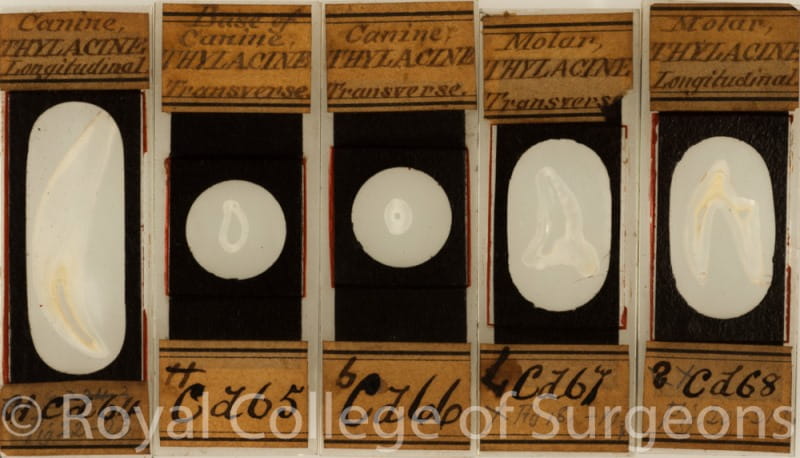Imaging Quekett’s bone slides: the origin of specimens
07 Apr 2017
Alessandro Felder

Quekett published his Histological Catalogue in 1855, and this includes detailed descriptions of many of his bone slides. Before imaging the slides, I wanted to find out from where Quekett got all these bones from exotic species to prepare for the microscope, so I perused the archives of RCS and the Zoological Society of London's Library (ZSL) to look for hints.
One of the first discoveries was that famous naturalist Richard Owen, Quekett’s superintendent at the time, had a right to claim the carcass of any animal that died at London Zoo. It is not too farfetched to think that this is where some of Quekett’s specimens originated.
Furthermore, looking at a registry of animals that lived at London Zoo during its first century of existence, I have found that examples of more than 70% of the non-indigenous species I imaged were kept there before 1855. Unfortunately at this time, many animals destined for zoological gardens didn’t survive the journey from the wild, providing a ready source of material for Quekett, which may have included some species that never made it to a zoo exhibit.
Additionally, we know that the Zoo had an osteological collection of its own for a while (until 1840, the year Quekett started working at RCS). I have found a letter from the ZSL secretary, William Ogilby, offering the ZSL collection to the College, so this could have been another, slightly different, source of specimens for Quekett.
Quekett’s diary entries are full of references to obtaining material from the Zoo (he received a “dromedary carcass” on April 3rd 1841, “a young wombat” on July 23rd 1841 and the “viscera of a babyroussa” on February 4th 1843, to name a few), but they also show that it wasn’t his only source. Many naturalists played important roles in bringing exotic specimens to the UK for study in the 1830s and ’40s (Quekett didn’t get the chance to travel, although he would have liked to visit China). For example, in his diary entry of the 1st October 1840, Quekett mentions labelling species of birds and animals brought to London in a barrel by John Gould, who had returned from Australia months earlier. He also must also have been in contact with John Edward Gray, who sent him the bones of a Dugong from the British Museum on 12th September 1842. Further skeletal specimens with unspecified senders arrived, such as “the bones of a large elk…from America” (1st December 1842) and “the bones of some Mammalia from New Holland, which had decomposed in the spirit in which they had been forwarded” (9th December 1842).
To conclude, it seems to me that, although London Zoo was a ready source of specimens for the Hunterian Museum’s bone collection, the purchasing or collecting of specimens brought to London by various naturalists was a similarly important point of supply for Quekett.
I hope I have been able to give you a small glimpse into how various London-based scientific institutes and personalities were interconnected in the first half of the 19th century and how this gave Quekett the necessary material to put together his microscopic preparations of bone!
You can find out more about Quekett and his work in our previous blog posts:
Alessandro Felder, The Royal Veterinary College, London

